Here is an extracted portion of my query, reflecting the EMAIL_ADDRESS column data type and property:
EMAIL_ADDRESS CHARACTER VARYING(20) NOT NULL,
However, John Saunders uses VARYING(256).
This suggests me that I have not necessarily understood the VARYING correctly.
I understand it such that the length of an email address is 20 characters in my case, while 256 for Jodn.
Context in John's code
CREATE TABLE so."User"
(
USER_ID SERIAL NOT NULL,
USER_NAME CHARACTER VARYING(50) NOT NULL,
EMAIL_ADDRESS CHARACTER VARYING(256) NOT NULL, // Here
HASHED_PASSWORD so.HashedPassword NOT NULL,
OPEN_ID CHARACTER VARYING(512),
A_MODERATOR BOOLEAN,
LOGGED_IN BOOLEAN,
HAS_BEEN_SENT_A_MODERATOR_MESSAGE BOOLEAN,
CONSTRAINT User_PK PRIMARY KEY(USER_ID)
);
I have never seen email addresses longer than 20 characters, used by ordinary people.
What is the optimal length for an email address in a database?
